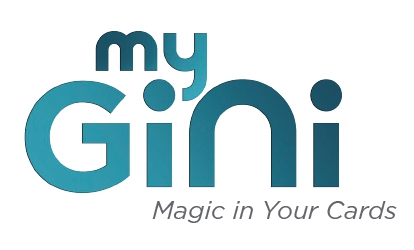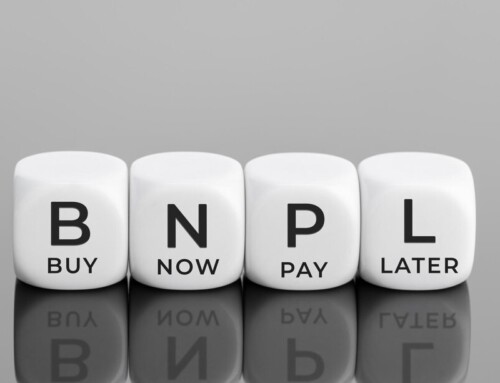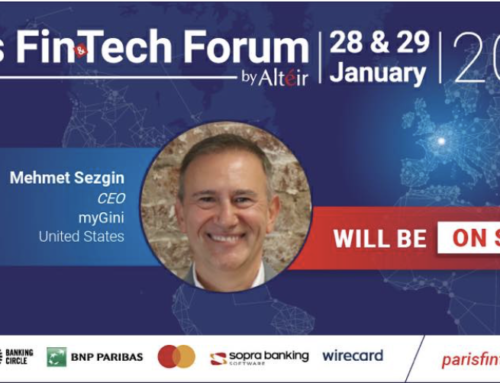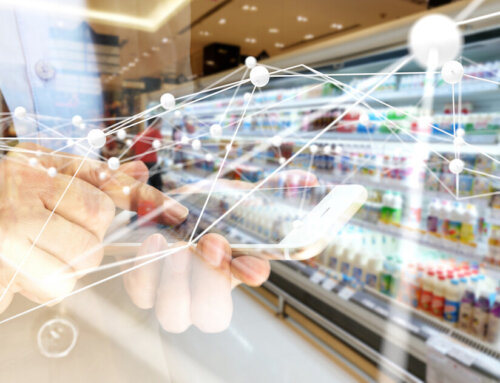
A fresh approach to customer loyalty – why banks and credit unions need ‘shopping inspiration’ to thrive
This article on dynamic loyalty was written by our founder and CEO, Mehmet Sezgin, and published in Bank Business and Credit Union Business magazines. You can check the online version here:
The largest proportion of US consumers is now mobile-first. These consumers check their smartphones over 150 times a day, want in on the latest trends and are a simple download away from any new money management app. With an abundance of options to choose from, how can traditional financial institutions and retailers compete for their loyalty? Mehmet Sezgin, CEO and Founder of myGini explains how a new generation of apps are enabling financial institutions and merchants to increase transaction volumes using dynamic loyalty platforms that deliver instant and relevant offers to consumers on mobile.
Smartphones have become integral to how we live, shop and manage finances. Research estimates there are 229 million smartphones in the hands of US consumers. And with apps telling us the train is late, someone is at the front door and our favorite artist has just released a new single – we are constantly on the lookout for solutions that make life more convenient.
The rise of mobile payments is part of this trend. Mobile has reduced the payment process to a single tap of the phone, with NFC-enabled POS terminals allowing retailers to participate in a faster payment experience. It is understandable traditional banks and credit unions want to capitalize on this trend by creating their own mobile solutions – but there are challenges.
Banking apps need some shopping inspiration
The US banking system is characterized by a large number of players, with over 5000 FDIC-insured financial institutions – including an increasing number of digital-only banks. As the competition grows, so do consumer expectations.
Any new banking app that is to succeed on the market needs to appeal to a more tech-savvy audience. Creating meaningful interactions and boosting user activity takes more than an app that lets consumers view their balance and monitor transactions. There must be something new and exciting there – something that reflects real understanding of their customers’ needs, wishes and behavior.
To get a better idea of what people want from their banking provider’s app, we need to first understand how they shop. A shopping experience that fills consumers with the feeling of convenience, choice and being personally cared for makes them return again and again. Indeed, retailers were quick to realize that providing rewards, personalized offers and discounts incentivizes consumers to jump on board and spend more.
Retail is an industry long on the hunt for ways to earn consumer loyalty. Can financial institutions take a leaf out of retailers’ playbook or is there a need to perfect the formula before they adopt the tactics?
Static loyalty makes shoppers switch off
The concept of earning shopper loyalty through promotions is not new. But for too long they have been provided via point cards, coupons and vouchers – and these methods are not without their problems.
How many times have you lost that little piece of paper you collect coffee stamps on, before earning that magical 10th cup? How many times has a clothing retailer’s “20% off on your birthday” offer bypassed you completely because you never received a reminder? How many hours have you spent browsing for coupons to use in your local area? And how often have they expired without warning?
Paper is going out of vogue and the bore of having to log onto a website through your browser to access promotions and discount offers is not much better either. Studies show 57 percent of members abandon loyalty programs due to how long it takes to earn points. Shoppers are being let down by evergreen loyalty programs that offer no new incentives, show no sign of individuality and simply fail to bring any excitement into shopping. In the end, it boils down to a question of dynamic loyalty.
Four elements of dynamic loyalty
To combat this loyalty fatigue, retailers need to design their programs to be frequent, relevant, interactive and visible. Frequency directly challenges the sluggish or static nature of loyalty programs by fueling shopper curiosity and spending with regular, personalized offers. Relevancy says it’s not enough to know what a person wants, it is also crucial to know when they want it. If a cardholder is bombarded with deals about a freshly purchased high-value item they have no intention to replace in the next couple of years, a retailer’s deal will make them tune out at best and regret their original purchase at worst.
Simply giving people what they want, when they want it is not enough either. Retailers must go beyond that to earn shopper loyalty and trust. By making their platform interactive, they can remind the cardholder of any ongoing or close to expiring deals and rewards in a timely manner. Visibility of transactions and completed deals further reinforces trust, demonstrating to customers that they are in control of their expenses and are getting the rewards they signed up for. If a loyalty platform cannot do these things, it is as good as if it was not even there in the first place.
A loyalty engine – on the financial institution’s mobile app
Retailers who want to draw in repeat business need to design their offers to be in front of the consumer on the device they use the most and delivered when they make decisions about spending – before shopping and at the point of sale.
Making offers, deals and rewards accessible through the mobile banking app creates a loyalty engine, where offers are always relevant to personal needs and pop up at the relevant times. Where consumers can track how long they have until an offer expires and which offers are the closest to them geographically.
This spells the end of boring loyalty offers that sit inactive in a physical wallet, crumbled up at the bottom of a bag, or in an email reminder that did not make it past the spam filter. When a loyalty program is in front of cardholders, cleverly communicating the value of a service or product, it makes them feel good about spending and motivates them to return.
From ‘traditional’ to ‘trailblazer’ – the changing role of banks and credit unions
A mobile solution that sits at the intersection of shopping, payments and banking can revolutionize the concept of loyalty, and banks and credit unions are well placed to spearhead this change. These financial institutions can magnify retailers’ reach and capability to offer more frequent, relevant, interactive and visible solutions to consumers on mobile.
With apps like myGini, customers can access personalized offers through the banking provider’s app, which means every time they earn rewards, find new deals and receive a helpful reminder of a bargain they do not want to miss, the financial institution gets closer to establishing their debit or credit card as the consumer’s number one card of choice.
Banks and credit unions need to recognize the potential of this and should not shy away from partnering with a fintech to make this happen. If they are willing to think out of the box, they can turn the disruptive force of fintechs into the source of their own innovation.
Consumers are ready for change – will banks and CUs keep up?
Consumers are ready to move on from static loyalty programs to more exciting ways to interact both with their favorite brands and banking providers. Banks and credit unions can lead the way and capitalize on this change with the help of fintechs that understand and view customer needs from a different perspective and can deliver this without an IT overhaul or their own finances suffering a blow.
Shoppers will increasingly favor those financial institutions whose mobile presence doubles up as a loyalty engine for relevant, useful and personalized retailer offers. As they deliver targeted shopping incentives, highlight available rewards and help consumers make intelligent financial decisions, banks and credit unions themselves will earn customer loyalty and increase transaction volumes.
Banking, payments and retailer offers coming together effortlessly on an app – this is the future of loyalty.






